Review: 2014 Chevrolet Captiva LT 2.4

When we think of the World Wide Web nowadays, we tend to think of it as an eternal now where only the newest and freshest information has any importance whatsoever. That wasn’t why it was created, however; it was meant to be a protocol through which document and information storage could be logically organized and quickly retrieved over the long term. This is relevant because here at TTAC we often see pretty good traffic numbers for articles we published years ago, new-car reviews in particular. Why would anybody want to read our old reviews? Most often, it’s because they are considering the purchase of that car today — when it’s a used car.
That’s why we’re running a review of a fleet-only vehicle that private individuals can’t even purchase from a Chevy dealer right now; in years to come, these will be on sale everywhere. Consider this, therefore, a letter, written and sealed for future readers. As a matter of fact, consider it a warning, written and sealed for future readers, and based on an 898-mile road trip in a variety of conditions.
When I first encountered the Captiva, it was a loaded, leather-lined LTZ form. The verdict? Not bad, but also not worth considering. At least it was decently quick, courtesy of the 264-horsepower, direct-injected three-liter V-6. For 2013 and 2014, however, the Captiva is only available with the 180-horsepower 2.4-liter Ecotec.
Four-cylinder CUVs are thick on the ground nowadays, so what’s the big deal? Well, the Captiva scales nearly 3,800 pounds compared to the 3,300 pounds of an equivalent CR-V. This puts the power-to-weight ratio about level with a five-liter Panther from twenty-five years ago. Not good. And sure enough, when it came time to drive the Captiva from sunny Powell, Ohio to Chicago, Illinois, the egg-shaped trucklet revealed its Achilles’ heel almost immediately. Or heels, I should say.
The first problem: power, or lack thereof. On flat grades with a headwind, the Captiva couldn’t maintain 80mph in sixth gear and had to run in fifth. Throw in a small grade (and I mean small, this is the Ohio-Indiana area we’re discussing) and it would often reach down another cog to fourth, churning the Ecotec at five grand or more for minutes at a time. The numbers don’t tell the full story; in this application, the 2.4 is completely gutless at all times and needs to be kept in the upper half of the tach just to keep pace with Midwest traffic. Does it even need to be said that the resulting engine noise and vibration is offensively coarse?
Naturally, spinning a big-inch four-cylinder hard all the time leads to dismal fuel economy, which is the Captiva’s other big problem. The on-board computer reported 22.6 miles per gallon during the freeway segments on Interstates 70 and 65, but if anything, it was optimistic; the Captiva swallowed approximately thirteen gallons during a 200-mile jaunt between West Lafayette and the Dayton area. It’s a rare automobile that makes me nostalgic for my dearly-departed Town Car’s twenty-two on the trot, but the Captiva manages the trick while simultaneously displaying none of the Lincoln’s ability to run fast and quietly.
Perhaps it’s the fault of the absurdly stupid and ill-behaved six-speed automatic that would often change its mind about the proper gear twice or even three times during acceleration. Even relatively simple situations like a full-throttle launch from a stop would often produce an early upshift followed by a change back to the original gear. This particular Captiva had thirteen thousand miles on it so it might be a case of bad “learning” on the part of the transmission’s ECU, but if this had been a new car purchased from the dealer I’d have returned it for service just based on the insanity of the gearbox.
The Captiva does, however, do one thing well: it handles. Nearly everybody else in the segment could learn quite a bit from the chassis, which combines solid grip and dynamic excellence with surprisingly decent ride quality. It doesn’t lean, it doesn’t porpoise, and it easily handles fast lane-changes without drama or discomposure. It’s close to the class of the CUV field in this regard and if Lemons races of the future have a cute-ute category this would be the one you’d want, at least for the autocross component, if there is one.
This “LT” model starts at $25,695 according to the GM Fleet website. What do you get for what amounts to a relatively lofty price in CUV-land? Not much. The cloth seats are flat and unsupportive, although the driver’s seat is power-operated. There’s a leather-wrapped steering wheel but the rest of the controls feel depressingly cheap and delicate. GM’s thumbwheels to control radio volume and cruise control feel worn-out when they are new and after a year of rental operation they had the wobbly inconsistency of the volume and tuning knobs from the kind of no-brand Sony Walkman ripoffs you used to get as “free gifts” when you subscribed to National Geographic.
There’s plenty of space for rear-seat passengers and luggage, although the sloping roofline made the rear area less than perfectly useful. My purpose in renting a Captiva was to take a few guitars and amplifiers, plus a wheelchair and a set or crutches, to a gig in Irving Park; because of the rear glass, I couldn’t store the wheelchair upright and therefore every meal stop became a Jenga game to get the thing out without either breaking something or scratching the hard plastic of the rear doors and interior panels.
Although the Captiva is effectively a decade-old Saturn, the interior was revised to quasi-modern standards when it became a fleet special. The problem is that the competition has moved on again since that revision. We’ve long since stopped expecting that GM can match, say, Ford for interior whiz-bang stuff and features — but when Toyota offers more inches of LCD screen than your product does, you have a problem. About all you can say about the Captiva’s telematics is that the iPod integration is surprisingly good and it allows the driver to skip any nasty three-line LCD interface in favor of choosing the music on the iPod directly. Unfortunately, the pre-amp is so weak, and the Captiva’s engine is so noisy, that it’s difficult to even hear music well on the freeway.
The CD player is louder, but I only had one CD for the entire trip: Joel Frederiksen’s Requiem For A Pink Moon. This album was suggested to me by a friend who knows about my Nick Drake obsession. (Readers of my own blog probably know about it as well; Nick Drake is the second-most mentioned person on said website, after Paul Reed Smith.) While the idea of playing Nick Drake covers with Elizabethan period instruments sounds like a dicey proposition, it works absurdly well in practice. Mr. Frederiksen and his group look more Euro than a twin-headlamp E21 BMW 316 parked next to a Roman fortification. I’d sell my soul to the Devil to have his voice, which is three octaves lower than mine and has the power of a cathedral pipe organ. If you only have one CD for an eight-hundred-mile trip, make it Requiem For A Pink Moon! (Disclaimer: I was provided with a review copy of this disc by the publisher. Further disclaimer: they aren’t getting it back.)
It’s possible to conceive that the Captiva LTZ AWD V6 might be purchased on the used market by the same kind of person who would buy an album of ancient-sounding Nick Drake covers. After all, both are European takes on something the British love to a fault. (Yes, the English adore the CUV.) This four-cylinder cloth-seater, on the other hand, won’t strike the desirability chord in anyone’s heart. The Captiva’s sterling qualities, which would be restricted to over-the-road handling and general build quality, don’t make up for its gutless engine, moronic transmission, dismal interior, excessive amount of road noise, and lamentable fuel economy. Attention future readers: this is a car to avoid at all costs.

More by Jack Baruth
Latest Car Reviews
Read moreLatest Product Reviews
Read moreRecent Comments
- 28-Cars-Later WSJ blurb in Think or Swim:Workers at Volkswagen's Tennessee factory voted to join the United Auto Workers, marking a historic win for the 89- year-old union that is seeking to expand where it has struggled before, with foreign-owned factories in the South.The vote is a breakthrough for the UAW, whose membership has shrunk by about three-quarters since the 1970s, to less than 400,000 workers last year.UAW leaders have hitched their growth ambitions to organizing nonunion auto factories, many of which are in southern states where the Detroit-based labor group has failed several times and antiunion sentiment abounds."People are ready for change," said Kelcey Smith, 48, who has worked in the VW plant's paint shop for about a year, after leaving his job at an Amazon.com warehouse in town. "We look forward to making history and bringing change throughout the entire South." ...Start the clock on a Chattanooga shutdown.
- 1995 SC Didn't Chrysler actually offer something with a rearward facing seat and a desk with a typewriter back in the 60s?
- The Oracle Happy Trails Tadge
- Kwik_Shift_Pro4X Union fees and corruption. What can go wrong?
- Lou_BC How about one of those 2 foot wide horizontal speedometers out of the late 60's Ford Galaxie?




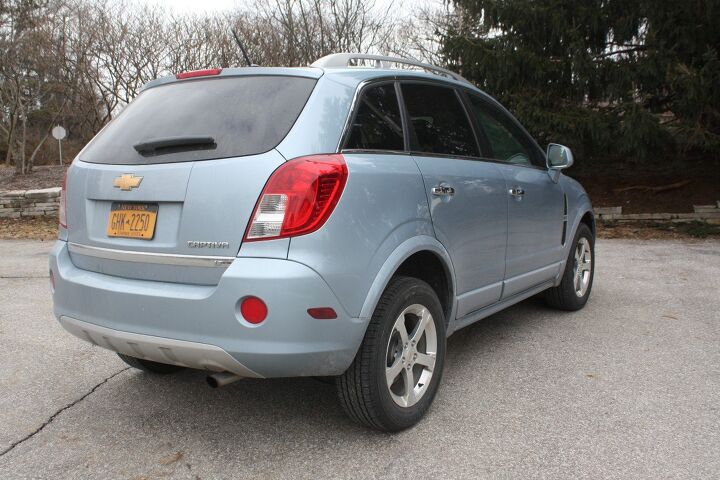




















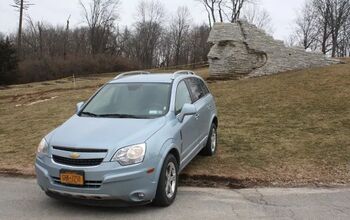
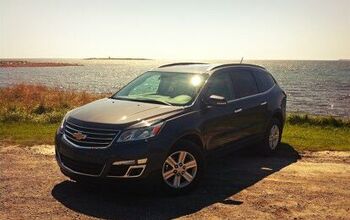
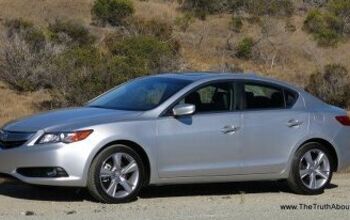

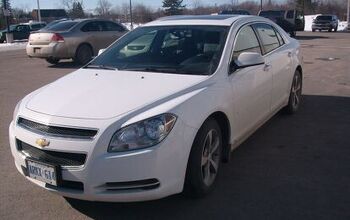










Comments
Join the conversation
I find many of the comments on this car, and to a lesser degree the review, just snobbish dislike for GM cars in general. I'm helping a friend with her test driving/buying of a 2013 - 14 small SUV. We have road tested the Captiva LTZ, Toyota RAV4 XLE and the top of the line Honda CRV. What we have found with test driving these cars on the high way, 2 lane country roads, suburban roads and poorly paved roads is the Captiva is MUCH quieter, MUCH smoother ride, comparable handling and overall much more comfortable. The engine performance (acceleration, etc) is equal in the Captiva and RAV4 but the Honda is better than both. All three cars have the same 3/36 and 5/100 warranty. The Toyota and Honda will have better resale value in 5 years, which is how long she plans to keep it. But the Honda and Toyota both cost $3000 - $5000 more in the same year/mileage range. And that does not take into account the increased financing cost for buying the more expensive Honda or Toyota. So the resale argument is at best a "wash" but based on the increased upfront cost, more likely a loss-leader. The amenities that the Captiva has that the Toyota and Honda do not have: all leather seats, park-assist (a big plus for this buyer), power seats (another big plus as this buyer is only 5' and needs to move the seat up), full featured and more intuitive touch-screen programming, much better 10 speaker/sub-woofer sound system and more overall cargo space. I am not saying that the Captiva is a better car than the RAV4 or the CRV. But at the lower price point combined with the added features and better performance in some categories, comments that it should be avoided at all costs, are just plain ignorant.
Take this with a grain of salt; I am not a frequent driver: I just rented one to drive from NYC to Cleveland. The fickle gear-changing was annoying to say the least. The car had no pick-up, and it was one of the noisiest vehicles I had ever driven. The hood didn't seem like it closed properly, either. The steering felt mis-aligned. It just seems poorly designed all around. Nothing was obvious. We had to search for charging ports. And figure out the headlight knob. And punch random buttons to tune the radio. The design also cuts into the trunk space. (Which also doesn't pop with an obvious lever/button/whatever). I was taking my daughter back to campus, and the same amount of stuff fit wonderfully in a Ford Taurus. On the plus side, it did feel weighty and secure among all the trucks on the road.